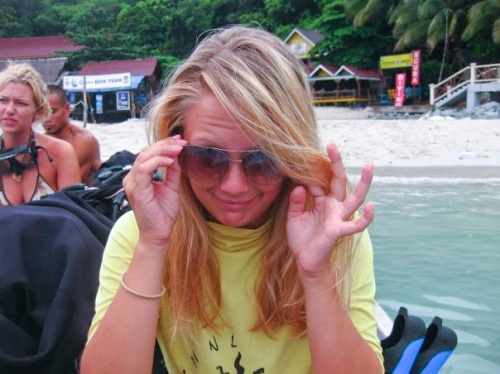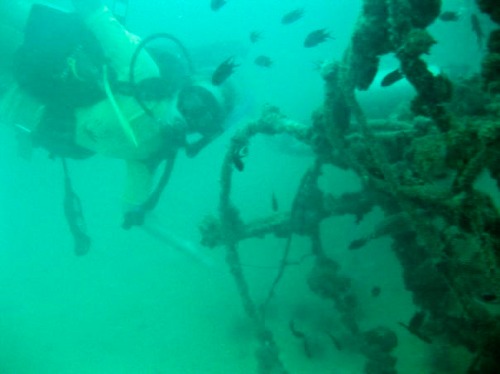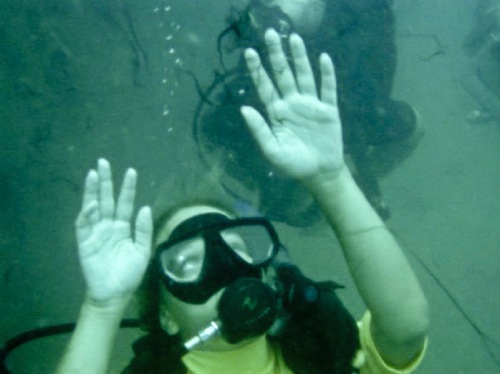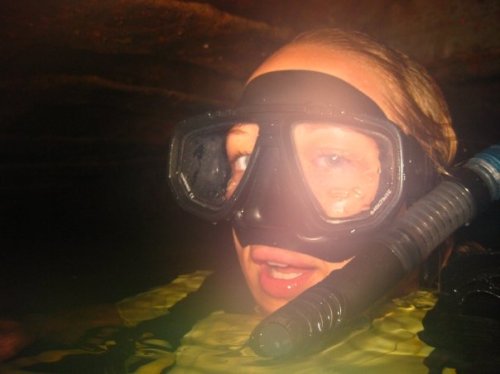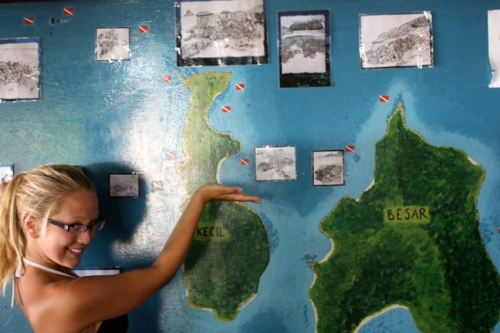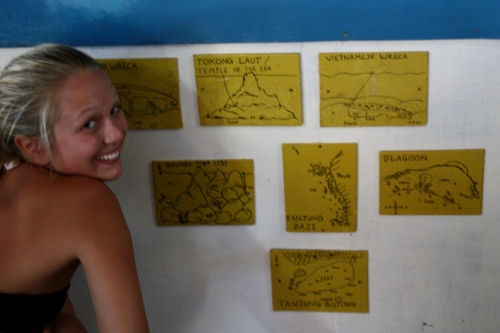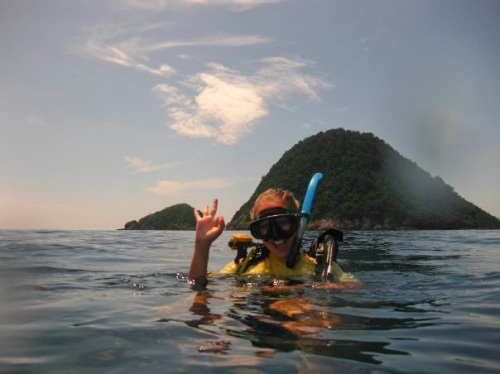Welcome After less than an hour on a boat from the east coast of Malaysia, the laid-back atmosphere and the natural beauty of the Perhentian islands immediately transport you to a different world. The white sand is dotted with sun-worshipping holiday makers, some retreating to the shade for a glass of freshly squeezed juice. A group of scuba divers are boarding a boat to venture out into the turquoise waters and submerge themselves in the underwater wonderland. Later, as the sun sets, a quiet buzz of music and chatter fills the air, together with the thin wisp of smoke from the barbeque fire.
The Perhentian Islands are two islands named Pulau Perhentian Kecil (Small Perhentian Island) and Pulau Perhentian Besar (Large Perhentian Island). The Malay name Perhentian is translated as “place to stop” and this is exactly what these two islands were for traders travelling between Malaysia and Bangkok in years gone by. These islands are still a gorgeous place to stop and rest today, albeit for tourists disconnecting from the stress and routine of everyday life and not for weary seafaring traders.
The islands remain relatively untouched and the only permanent inhabitants live in a small fishing village on Perhentian Kecil. Apart from footpaths that cut through the jungle, there are no roads on the islands. The only way to get around is by walking through the jungle or taking a sea taxi. If you tread carefully, you may even encounter some of the islands’ shy wildlife on the way, such as monitor lizards, fruit bats, squirrels or even the elusive mouse deer. Simple chalets and some moderately luxurious resorts line the picturesque beaches along with restaurants, dive centres and boat operators advertising their services with hand-painted signs.
Perhaps it is the stretches of white beach or the crystal clear water and the superior scuba diving. Perhaps it is the untouched forests or the relaxed atmosphere and unspoiled charm. We like to think that is a little bit of all of this that makes the Perhentian Islands the perfect place to stop and take some time out.
Visit a new place is always a pleasant experience, but things can change if you do not know what is their appeal
Saturday, June 4, 2011
Terantak Amelia Cafe n' Chalet @ Perhentian Island
Friday, June 3, 2011
Perhentian Island Long Beach Self Snorkeling
The Perhentian Islands (Pulau Perhentian in Malay) lay approximately 10 nautical miles (19 km) offshore the coast of northeastern Malaysia in the state of Terengganu, approximately 40 miles (64 km) south of the Thai border. South Beach, Perhentian BesarThe two main islands are Perhentian Besar (“Big Perhentian”) and Perhentian Kecil (“Small Perhentian”). The small, uninhabited islands of Susu Dara (Virgin Milk), Serenggeh and Rawa lie off Kecil. The Perhentians belong to Pulau Redang National Marine Park, which means that fishing, collecting coral and littering are strictly prohibited. Like Besut, people here generally speak Kelantanese Malay. Both the islands have palm-fringed white coral sand beaches (that can be tough on the feet) and turquoise blue sea. One can have a number of activities on its beaches and forests. Scuba-diving, snorkeling, and swimming are the most popular tourist activities here. On most beaches, the water is shallow with lots of rays, cuttlefish and parrotfish. For diving, there are dozens of divesites around both main islands, as well as several off-shore sites. Apart from these, you could also enjoy activities like camping, canoeing, fishing, jungle trekking, and banana boat riding. As for accommodation, most of it can be found around both islands. Hotels are usually aimed at budget travelers. Summer 2007, 2 wind turbines have been installed, nevertheless the island’s electrical power is only available from 7.00pm to 7.00am. For some of the shop …
Thursday, June 2, 2011
Diving in the Perhentian Islands
After days of eye problems keeping us above sea level, we were finally ready to take the plunge. After all, we had come to the Perhentians in part for the virgin reefs fringing the islands.
We dove with the in house dive shop at our bungalow, making it easy to roll out of bed and wade out to the dive boat. On our first diving day we headed out for a two tank trip, hitting two of the island’s most famous dive sites: Sugar Wreck and Terumbu Tiga, or T3. As we headed out my eyes were still a bit sensitive but I was determined to dive!
Sugar wreck was my first ever wreck dive and I was required to complete a PADI “Adventure Dive” in order to do it. The cynic in me says this was a ploy to get me to do my Advanced Open Water course, as it basically consisted of paying more money and pointing to the buoy line a few times throughout the dive. Descending down the line, I was awestruck by the amount of life. Nurse sharks, lionfish and barracuda lurked around the sunken ship ominously, and we swam through the swirling, inky evidence of squid or octopus.
Heading into the wreck, we swam towards an air pocket the divemaster had told us about beforehand. At the time, this was only my seventh ever dive, and my buoyancy control was lacking, to say the least. In my excitement I started to shoot up towards the air pocket, not seeing the metal beam directly in the path of my head. Luckily my dive buddies were a bit more keen than I, and Mark and the divemaster simultaneously yanked me away before any damage was done. Embarassing? Yes. Better than being med evaced off the island? Also yes. My shame evaporated quickly as I marveled at being able to breathe with no air tank, 50 feet under water.
Our next dive was to T3, a favorite site amongst divemasters for its swim-throughs, caves, and microlife known as nudibranches. This was a big day of firsts for me, and lacking any experience with swimthroughs I was so focused on getting through the tunnels and trying not to knock into everything and kill anything, that I have almost no other memories of the dive!
On one of our last days on the island, we headed out for our final dive and what would become one of our best memories of the trip. Tokong Laut, or Temple of the Sea, is the superstar of Perhentian Island diving. Its topography alone would be impressive, an undersea mountain emerging at the surface as only a small blip on the horizon, but below there was more untouched marine life than I have ever seen. I only regret that I didn’t have the diving experience to remember the names of what I was looking at or the camera skills to capture it! (All underwater photos in these posts are taken with the borrowed camera of a friend, and we really didn’t know how to use it very well.) What I can remember is Mark and I looking at each other underwater, seeing the excitement in each others eyes, and signing frantically to each other over the magic of it all. We were even lucky enough to see the resident three legged turtle that we had been briefed on! It was my first time seeing my blog’s namesake underwater, and it was love at first site. Even with my limited technical skills and inexperience, to this day this is one of the best dives of my life.
Keeping with my recent video clip theme, I put together a short video of our boat ride back to the dock. My camera skills weren’t what they are today, but you can get an idea for the amazing topography of the Perhentians. At the end of the video we pull right up the bungalows we were staying in. Enjoy!
Wednesday, June 1, 2011
Pulau Perhentian Kecil and Besar
The Perhentian islands are surrounded with pristine waters and white sand beach. In fact, Pulau Perhentian is made up of two islands named Perhentian Kecil and Perhentian Besar. It is located at Terengganu in Malaysia and there are direct flights from Kuala Lumpur to Terengganu. From there you can take a bus to Kuala Besut and get on a ferry to Pulau Perhentian. Do note that there are no ATMs, banks and public phones. The prices on both islands vary from time to time because of the low and high season. Now’s the time to disconnect from the outside world.
Perhentian Kecil
Kecil means small in Malay and this part of the island is known for backpackers. The vibe is pretty laid back and has a party atmosphere when dusk sets. The island is mostly frequented by backpackers from Europe, America and Australia. There are several cheap accommodations at Perhentian Kecil. There are several eateries and bars on the main beach, Pasir Panjang. It can get a little loud at night so best to stay somewhere that is secluded on Perhentian Kecil if you want some privacy. Although most accommodations are minutes away to the sea, the view is not as spectacular as Perhentian Besar’s.
Pasir Panjang (also called Long Beach) is the main beach and has a crescent shape coast ideal for swimming, snorkeling and diving. There are less corals on the furthest left side of the beach. Bring a book or a beach ball to enjoy the view of South China sea. Take a water taxi to Perhentian Besar if you want to explore the other island.
Perhentian Kecil has accommodations that is also part of a diving centre. The waters is known for diving and snorkeling therefore get an accommodation that comes along with water sports package. PADI diving course is also available at most diving centers. You can opt for jungle trekking as there are trails so you won’t get lost. Bring along an insect repellent and a bottle of water.
Seafood is the main cuisine found on Pulau Perhentian. Perhentian Kecil offers ala-carte eateries, mostly along Pasir Panjang. You can try local dishes such as Mee Goreng and quench your thirst with an ice cold lemon tea for less than MYR10. The prices at Perhentian Kecil is way cheaper than Perhentian Besar.
Perhentian Besar
Besar means big in Malay and it is upscale than Perhentian Kecil. Most of the resorts are located on the western part of the island. The other part of Perhentian Besar is undeveloped and surrounded with dense forests. If you are seeking quality time and privacy with your loved ones, book an accommodation that is away from the other resorts. The island is mostly frequented by families with children.
There are two beaches at Perhentian Besar named Teluk Pauh and Teluk Dalam. The beach at Teluk Pauh is a giant pool with crystal clear waters. Swimming and lazing on the beach are the perfect activities for an island holiday. Sign up for a diving or snorkeling package to try something different once in a life time. The other beach is Teluk Dalam and it is the longest beach on Pulau Perhentian. The waters are not as clear as the previous beach but the location is a little far off from the resorts. If you are lucky, the beach is empty and you can play a game of volleyball or lie on a sarong to get a tan.
All resorts on Perhentian Besar has an in-house restaurant and bar so no worries about food when you are there. Do note that there no ala-carte eateries here. If you want to try authentic local dish, get a taxi boat booking from the resort.
Pulau Perhentian suits anyone who is looking for new experience or a quiet solitude time. Pick Perhentian Kecil if want to chill and party and Perhentian Besar for privacy and peace. The best time to visit is in March and early September.
Sponsor Links
Click Here!Complete Niche Travel Package! Make Money In Travel!Best Deal Ever
www.nichetravels.com
Click Here!Travel Blog Success - eCourse
travelblogsuccess.com
Click Here!A Second Home In New Zealand
www.nukiwi.com

